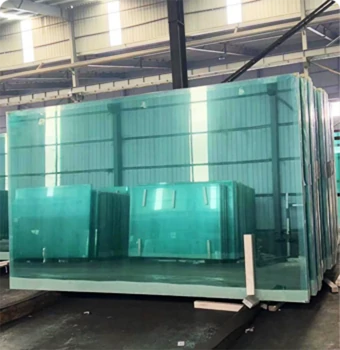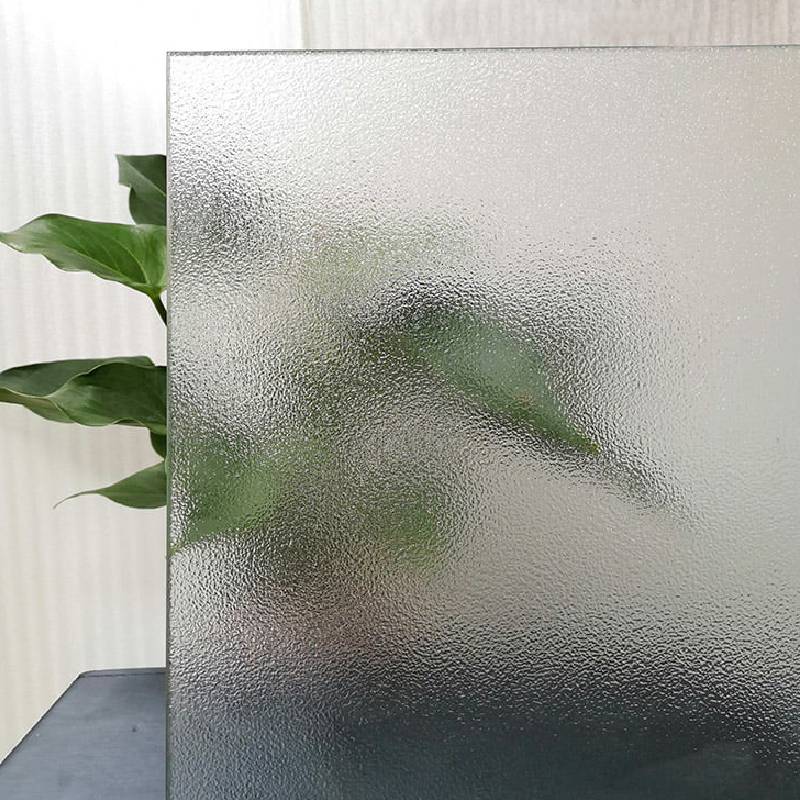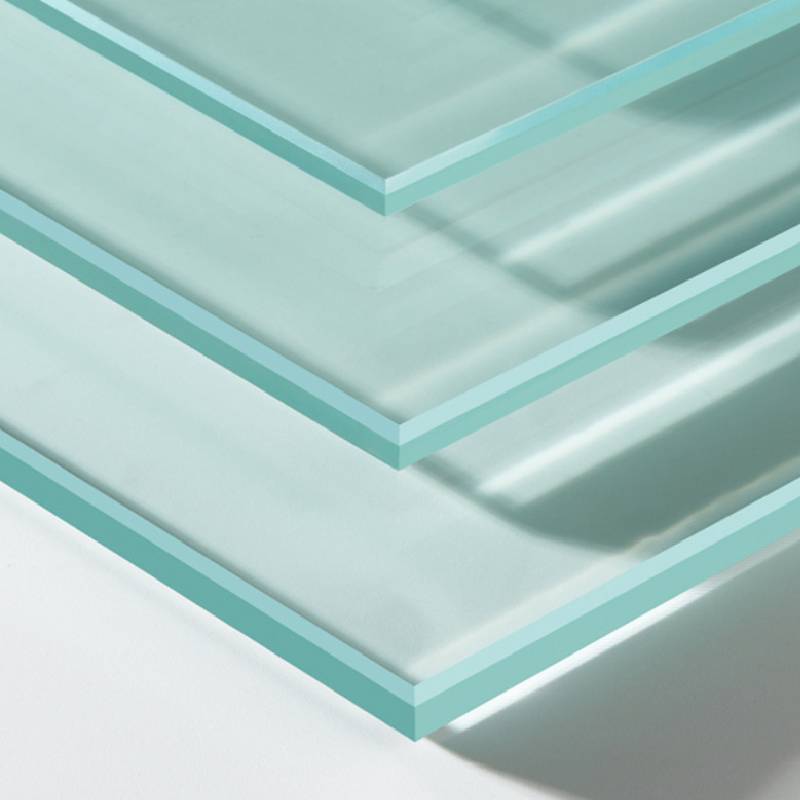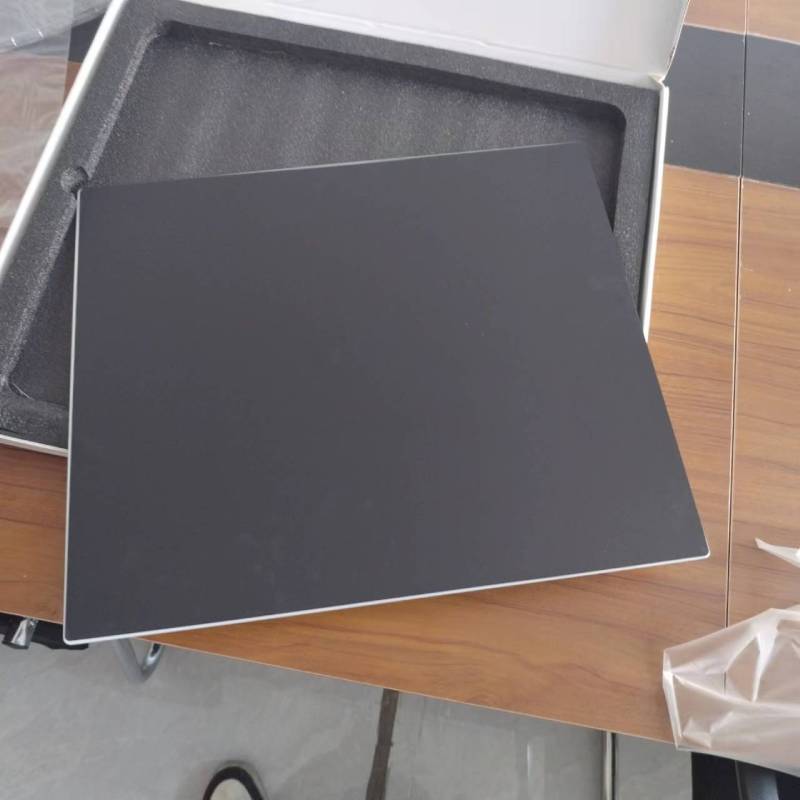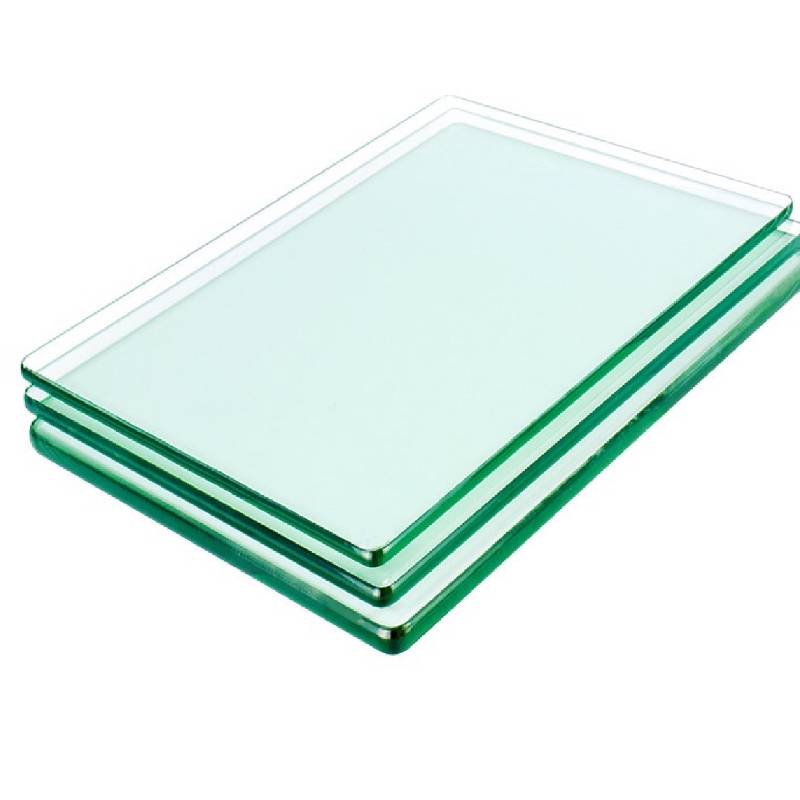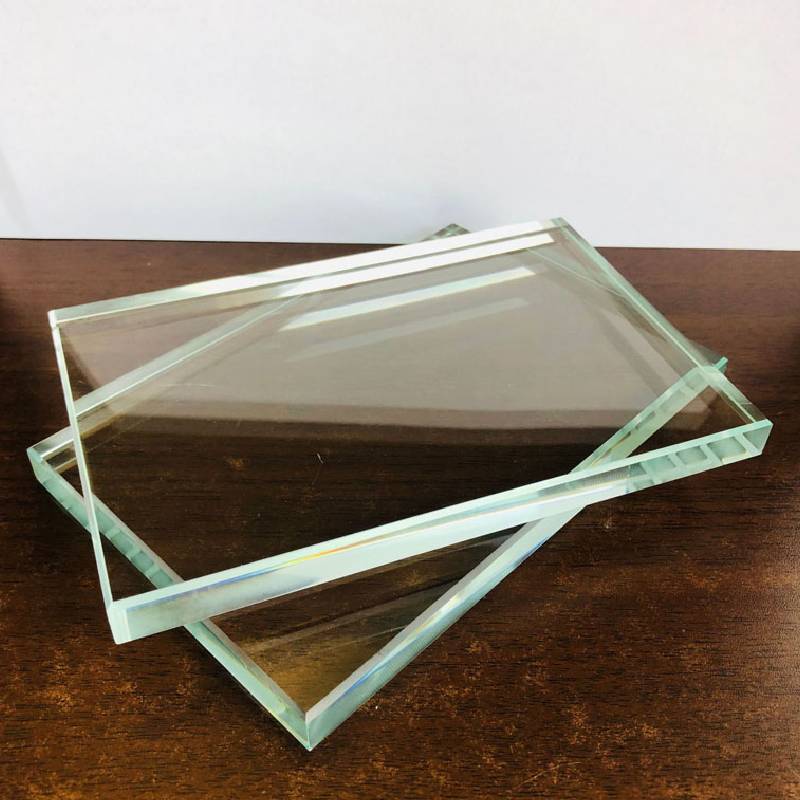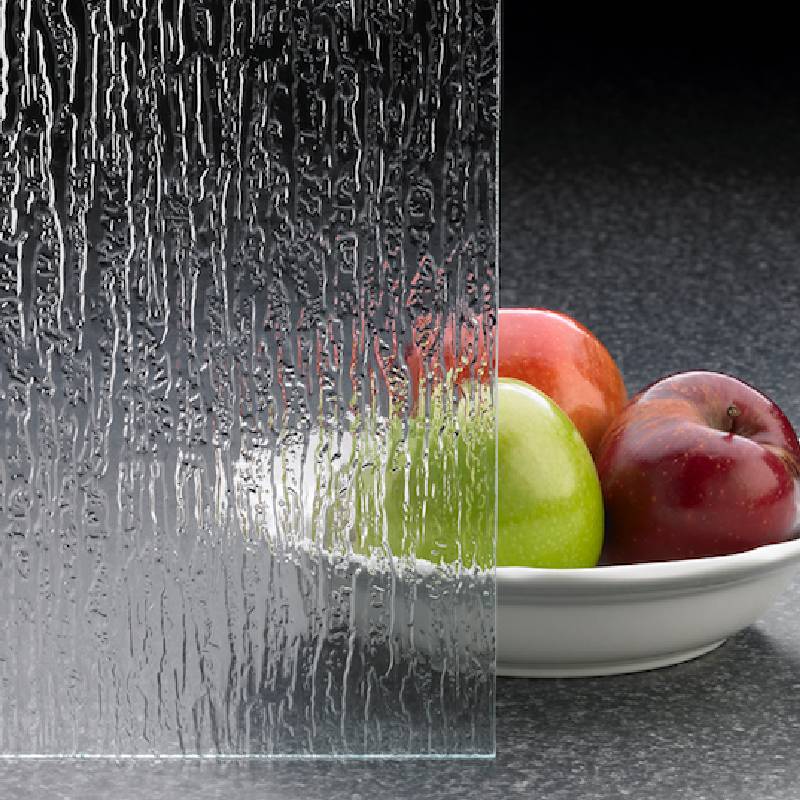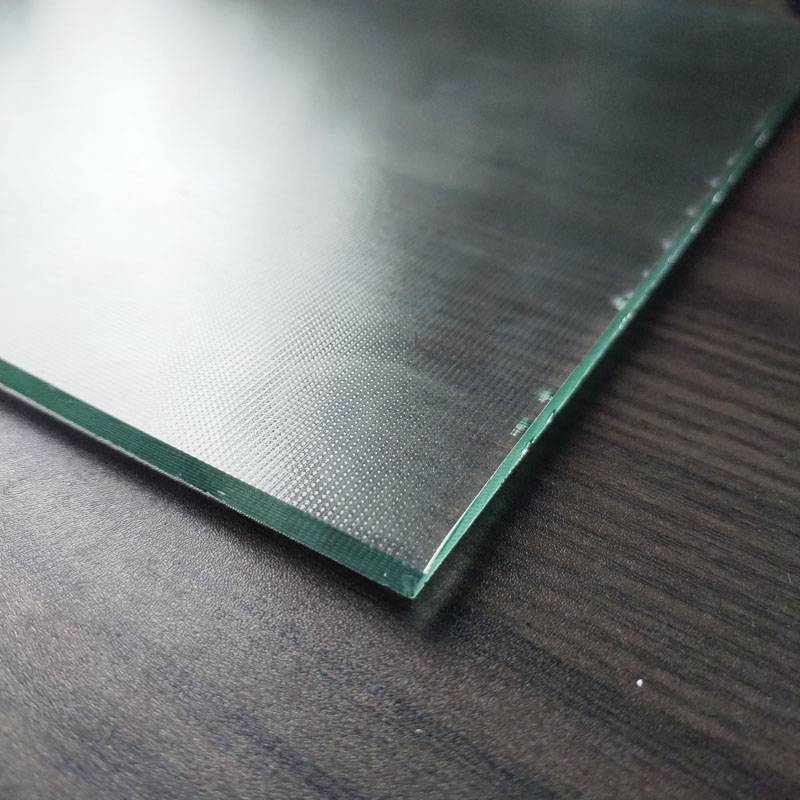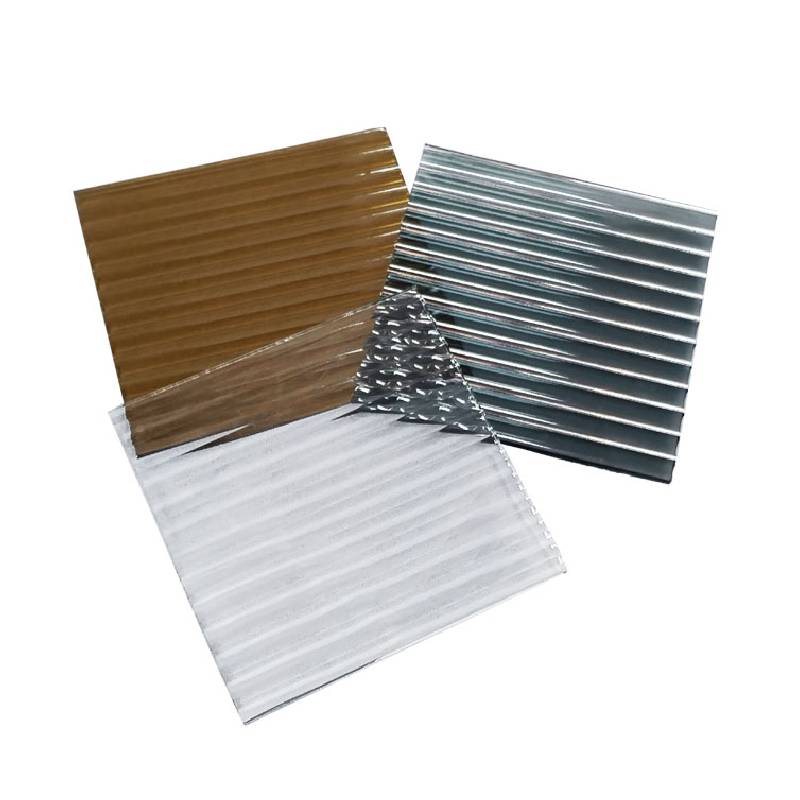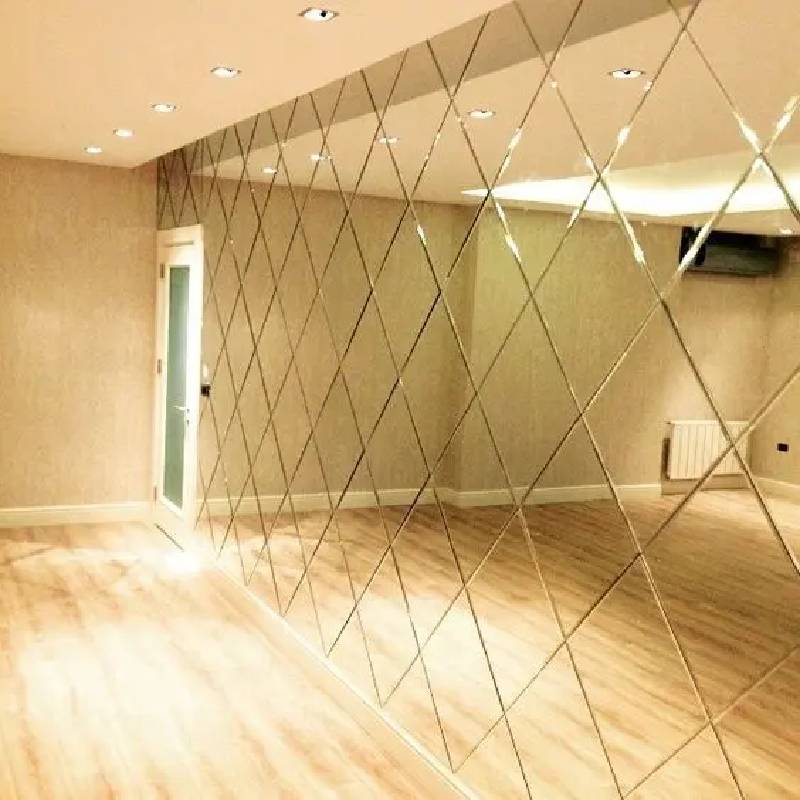Float glass means that the raw materials are melted at high temperature in the furnace. The molten glass continuously flows from the furnace and floats on the surface of the relatively dense tin liquid. Under the action of gravity and surface tension, the glass liquid spreads on the tin liquid surface. It is opened, flattened, and the upper and lower surfaces are formed to be smooth, hardened, and cooled before being led to the transition roller table. The rollers on the roller table rotate, pulling the glass ribbon out of the tin bath and into the annealing kiln. After annealing and cutting, flat glass products are obtained. The biggest feature of float glass is that its surface is hard, smooth, and flat. Especially when viewed from the side, the color is different from ordinary glass. It is white and the object is not distorted after reflection. In addition, due to the relatively good thickness uniformity, the transparency of its products is also relatively strong. It is precisely because of this transparency that it has a wider field of view. The broad field of view allows float glass to be used in many fields.
The production process of float glass is completed in a tin bath where protective gas (N2 and H2) is introduced. Molten glass continuously flows from the tank kiln and floats on the surface of the relatively dense tin liquid. Under the action of gravity and surface tension, the molten glass spreads and flattens on the tin liquid surface, forming an upper and lower surface that is smooth, hardened, and cooled. Then he was led to the transition roller table. The rollers on the roller table rotate, pulling the glass ribbon out of the tin bath and into the annealing kiln. After annealing and cutting, flat glass products are obtained. Compared with other forming methods, the advantages of float method are: it is suitable for high-efficiency manufacturing of high-quality flat glass, such as no corrugation, uniform thickness, smooth upper and lower surfaces, and parallel to each other; the scale of the production line is not limited by the forming method, and the energy per unit product Low consumption; high utilization rate of finished products; easy to scientifically manage and realize full-line mechanization and automation, high labor productivity; continuous operation cycle can last for several years, which is conducive to stable production; can provide suitable conditions for online production of some new varieties, such as Electric float reflective glass, spray film glass during annealing, cold end surface treatment, etc.
Float glass is widely used and is divided into tinted glass, float silver mirror, float white glass, etc. Among them, ultra-white float glass has a wide range of uses and broad market prospects. It is mainly used in the fields of high-end buildings, high-end glass processing and solar photovoltaic curtain walls, as well as high-end glass furniture, decorative glass, imitation crystal products, lighting glass, precision electronics industries, Special buildings, etc. Float glass has relatively good thickness uniformity and relatively strong transparency. Therefore, after tin surface treatment, it is relatively smooth. Under the action of smoothing, flame and polishing, it forms a surface that is relatively neat and flat. Glass with better strength and stronger optical properties. This kind of float glass has the characteristics of good transparency, brightness, purity, and bright indoor light. It is also the best choice for building doors, windows, and natural lighting materials. It is also one of the most widely used building materials. one.
The history of float glass can be traced back to the late 1950s. The British Pilkington Glass Company announced to the world that it had successfully developed the float forming process for flat glass. This was a revolution in the original grooved top forming process. However, the Western technology blockade at that time made China's float glass development and production have to take the path of self-reliance and independent innovation. In May 1971, the former Ministry of Building Materials Industry decided to conduct float process industrial trials in Luobo. Glass experts from all over the country gathered in Luobo, and more than a thousand employees of Luobo participated in the war. On September 23, 1971, under the guidance of department leaders and relevant experts, and with the full cooperation of fraternal units, the cadres and workers of Luoyang University worked together for more than three months and finally successfully built the first float. The glass production line produced my country's first float glass. From 1971 to 1981, CLFG implemented large-scale technical transformation on this line three times. The melting capacity of the production line reached 225 tons, the plate width exceeded 2 meters, and the overall yield reached 76.96%. At the end of 1978, In early 1979, thinner 4 mm glass was stably produced. The technology and equipment of "Luoyang Float Glass Process" were also improved day by day, and the technical level was continuously improved.
Kostir flotglers endurspeglast aðallega í eftirfarandi þáttum: Í fyrsta lagi hefur það góða flatleika og engin vatnsgára; í öðru lagi, valinn málmgrýti kvarssandur hefur gott hráefni; í þriðja lagi er glerið sem framleitt er hreint og hefur gott gagnsæi; að lokum, uppbyggingin Samþykk, þung, slétt viðkomu, þyngri en flat plata á fermetra af sömu þykkt, auðvelt að skera og ekki auðvelt að brjóta. Þessir kostir gera það að verkum að flotgler er mikið notað í byggingariðnaði, bifreiðum, skreytingum, húsgögnum, upplýsingaiðnaðartækni og öðrum atvinnugreinum.
- Þykkt flotglers
Venjuleg þykkt 3mm, 4mm, 5.5mm, 6mm, 8mm, 10mm, 12mm
Ofurþunnt 1,2 mm, 1,3 mm, 1,5 mm, 1,8 mm, 2 mm, 2,3 mm, 2,5 mm
Extra þykkt 15mm, 19mm
Stærð 1220*1830mm, 915*2440mm, 915*1220mm, 1524*3300mm, 2140*3300mm, 2140*3660mm, 2250*3300mm, 2440*3660mm
 Afríku
Afríku  albanska
albanska  amharíska
amharíska  arabíska
arabíska  Armenska
Armenska  Aserbaídsjan
Aserbaídsjan  baskneska
baskneska  hvítrússneska
hvítrússneska  bengalska
bengalska  bosníska
bosníska  búlgarska
búlgarska  katalónska
katalónska  Cebuano
Cebuano  korsíkanskt
korsíkanskt  króatíska
króatíska  tékkneska
tékkneska  danska
danska  hollenska
hollenska  Enska
Enska  esperantó
esperantó  eistneska, eisti, eistneskur
eistneska, eisti, eistneskur  finnska
finnska  franska
franska  frísneska
frísneska  galisíska
galisíska  georgískt
georgískt  þýska, Þjóðverji, þýskur
þýska, Þjóðverji, þýskur  grísku
grísku  Gújaratí
Gújaratí  Haítískt kreóla
Haítískt kreóla  hausa
hausa  hawaiískur
hawaiískur  hebreska
hebreska  Neibb
Neibb  Miaó
Miaó  ungverska, Ungverji, ungverskt
ungverska, Ungverji, ungverskt  íslenskur
íslenskur  igbó
igbó  indónesíska
indónesíska  írska
írska  ítalska
ítalska  japönsku
japönsku  javanska
javanska  Kannada
Kannada  kasakska
kasakska  Khmer
Khmer  Rúanda
Rúanda  kóreska
kóreska  Kúrda
Kúrda  Kirgisi
Kirgisi  TB
TB  latína
latína  lettneska
lettneska  litháískur
litháískur  Lúxemborg
Lúxemborg  makedónska
makedónska  Malgashi
Malgashi  malaíska
malaíska  Malajalam
Malajalam  maltneska
maltneska  Maori
Maori  Marathi
Marathi  mongólska
mongólska  Mjanmar
Mjanmar  nepalska
nepalska  norska
norska  norska
norska  oksítanska
oksítanska  Pastó
Pastó  persneska
persneska  pólsku
pólsku  portúgalska
portúgalska  Púndjabí
Púndjabí  rúmenska
rúmenska  Rússneskt
Rússneskt  Samósk
Samósk  skosk gelíska
skosk gelíska  serbneska
serbneska  Enska
Enska  Shona
Shona  Sindhi
Sindhi  Sinhala
Sinhala  slóvakíska
slóvakíska  slóvenska
slóvenska  sómalska
sómalska  spænska, spænskt
spænska, spænskt  Sundaneskir
Sundaneskir  svahílí
svahílí  sænsku
sænsku  Tagalog
Tagalog  Tadsjikska
Tadsjikska  tamílska
tamílska  Tatar
Tatar  telúgú
telúgú  Tælensk
Tælensk  tyrkneska
tyrkneska  Túrkmenska
Túrkmenska  úkraínska
úkraínska  Úrdú
Úrdú  Uighur
Uighur  úsbekskur
úsbekskur  Víetnamska
Víetnamska  velska
velska  Hjálp
Hjálp  jiddíska
jiddíska  Jórúba
Jórúba  Zulu
Zulu 

